Images: A Dinosaur Wrist Transforms into a Bird Wing

Dino Wrists
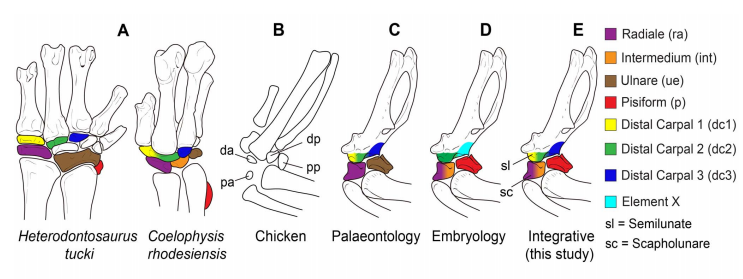
The wrist bones of two early dinosaurs, Heterodontosaurus tucki and Coelophysis rhodesiensis, alongside the bones of a chicken. Early dinosaurs had as many as nine wrist bones, while modern birds, their descendents, have four. The rightmost illustrations show theories from paleontology, embryology and a combined approach as to how these nine bones became four as dinosaur arms evolved into bird wrists. [Read full story]
Bird tree
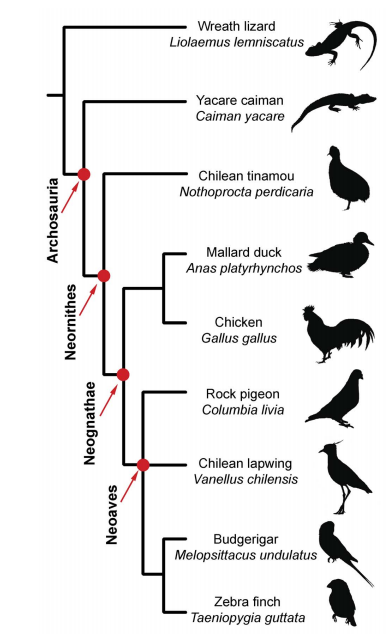
This tree shows the relationships between modern birds studied by University of Chile researcher Alexander Vargas and colleagues. The researchers used a new protein-tracking technique to trace the development of bird wing bones while the birds developed in the egg. By combining this information with paleontological data, the researchers could map the relationships between modern bird bones and ancient dinosaur bones. [Read full story]
Wrist development
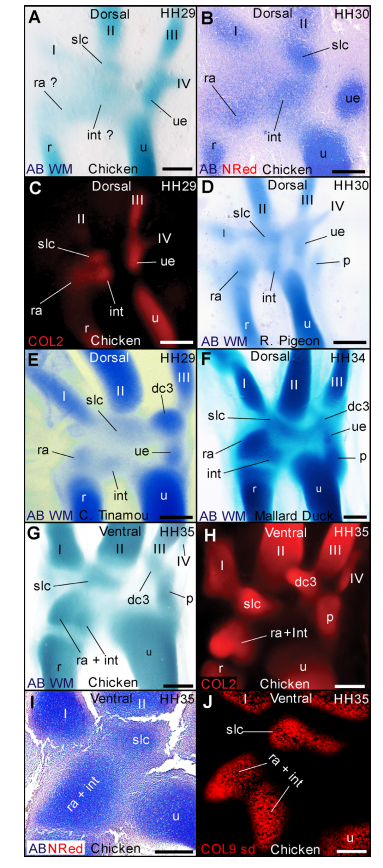
The embryological development of the wrist of the chicken, pigeon, duck and Chilean tinamou. These slides reveal how a composite cartilage structure (labeled ra+int here for radiale+intermedium) forms to create a single ossified bone in the bird wrist. [Read full story]
Embryonic birds

Another view of embryonic bird development reveals the advances made by the new protein-tracking technique developed in Vargas' lab. Slide A shows a traditional stain of a developing chicken wrist. The rest of the images use the new protein-tracking method. In slide A, the structure marked "slc" appears to be one region. The other images reveal that, actually, "slc" is two separate cartilage structures that later fuse into a single bone. These fusions can reveal the evolutionary history of the tissue. [Read full story]
How bones develop
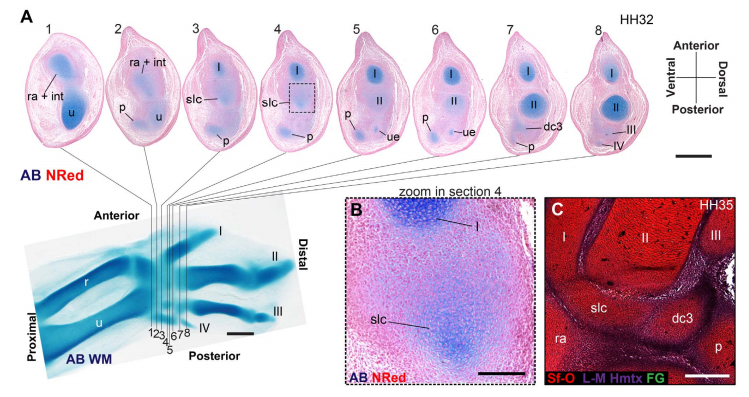
Slices of an embryonic bird wrist reveal the development of bones, in blue. Wrist bones are like tiny puzzle pieces, Vargas told Live Science, and it is often difficult to see where they originate in development. Paleontologists focus on the fossil record to elucidate evolution, while developmental biologists look to the embryo, which preserves many evolutionary remnants. Combining paleontology data with new embryological techniques allowed Vargas and his team to figure out which bird wrist bones correspond to wrist bones in dinosaur specimens. [Read full story]
Bird bones

The development of the ulnare bone and distal carpal 3 in multiple bird species, from finches to ducks. These embryological snapshots reveal that these two bones coexist for a time in the bird embryo, before the ulnare bone disappears.
The Ulnare
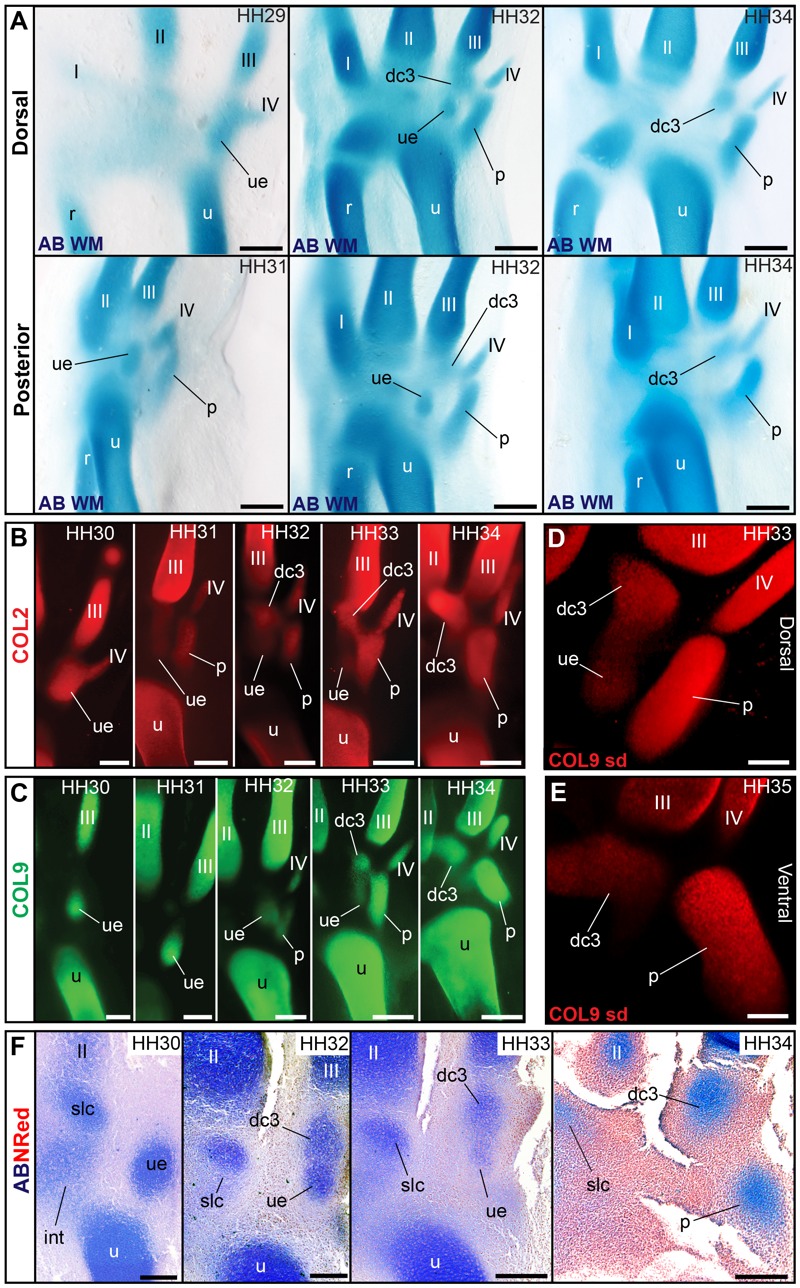
The ulnare bone (labeled ue) forms and vanishes during the development of a chicken embryo. Paleontologists had described this bone as vanishing during development and being replaced by a structure called "element x." A new study confirms the ulnare does disappear during development and finds the "element x" is actually a bone called distal carpal 3 (labeled dc3). [Read full story]
Get the world’s most fascinating discoveries delivered straight to your inbox.
Tiny bone reappears

A tiny crumb of bone known as the pisiform was lost in bird-like dinosaurs but re-evolved in modern birds. This bone is seen in modern lizard wrists and in four-legged dinosaurs, but bird-like dinosaurs lost it when they began to walk upright. The pisiform is important for flight -- it gives the wing rigidity as the bird moves the limb upward -- so it appears that birds regained this lost bone as they took to the skies. The pisiform is labled "p" in these images. [Read full story]
Evolution of wrist bone
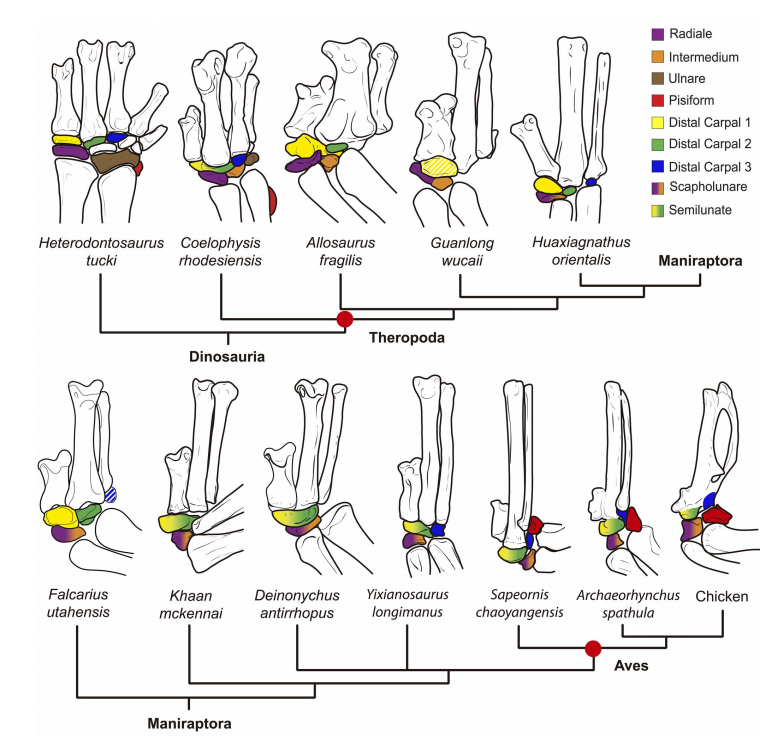
The evolution of wrist bones in dinosaurs to birds. The pisiform (red) is seen in early dinosaurs such as Heterodontosaurus tucki but vanishes in birdlike dinosaurs such as Falcarius utahensis and Deinonychus antirrhopus. It then reappears in primitive birds such as Sapeornis, which appeared around 125 million years ago. The color-coding shows how other wrist bones correspond in dinosaurs and modern birds. [Read full story]

Stephanie Pappas is a contributing writer for Live Science, covering topics ranging from geoscience to archaeology to the human brain and behavior. She was previously a senior writer for Live Science but is now a freelancer based in Denver, Colorado, and regularly contributes to Scientific American and The Monitor, the monthly magazine of the American Psychological Association. Stephanie received a bachelor's degree in psychology from the University of South Carolina and a graduate certificate in science communication from the University of California, Santa Cruz.
 Live Science Plus
Live Science Plus





